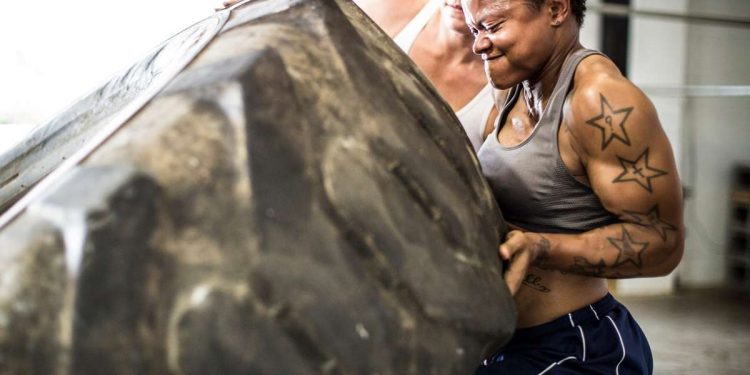© MoMo Productions/Getty Images
MoMo Productions/Getty Images
- With summer coming, personal trainers have seen a rise in people seeking fast fitness results.
- You can make a lot of fitness progress in a few months with specific, realistic fitness goals.
- To lose fat or gain muscle, work multiple muscle groups at once, create a nutrition plan, and prioritize recovery.
- Visit Insider’s homepage for more stories.
Spring is here, and hot vaxx summer is just around the corner. As a return to public life looms in the near future, people are emerging from months of COVID hibernation to hit the gym in time to flex on friends, family, and acquaintances.
While any body can be a beach body, personal trainers say they’ve seen a major rise in efforts to lose weight and gain muscle in the few months remaining before summer.
“We have seen a huge rush of people wanting to get in better shape since losing motivation and gaining weight during COVID,” Noam Tamir, founder and CEO of TS Fitness, told Insider.
If this is you, take heart. There’s still time to take big steps on your fitness journey – even as a beginner – with proper planning, realistic goals, and a solid training plan.
“We have seen incredible transformations in just 30 days, so in 60 to 90 days you can make huge progress,” Tamir said.
See also: Weight Loss Motivational Quotes
Get your priorities in order
Before you can start your ideal regimen for peak summer fitness, you need to understand what that means to you.
One of the most common fitness mistakes people make is not narrowing down specific goals, according to personal trainer Bryan Goldberg.
“I think people fall into the trap of trying to do too much. You can’t do it all,” he told Insider.
Physiologically, it’s very difficult to lose significant body fat at the same time as putting on muscle, he said. Trying to do so can stall your progress and leave you feeling frustrated and unmotivated.
If you want to see results, particularly in a short time frame, your best bet is to stick to one goal until you’ve made significant progress, Goldberg said.
If you aren’t sure, consider whether you want to add muscle and size, lose body fat and make your muscles more visible, or focus on performance goals.
For most people, losing fat will lead to more obvious aesthetic results in a short time, since it’s a quicker process than building muscle mass.
Nutrition is a key part of fitness goals
Once you’ve decided what your goals are, you need to eat to support them, since the gym will only get you so far without a good nutrition plan.
Losing body fat requires a calorie deficit – or burning more calories overall than you take in.
In contrast, you need to be in a calorie surplus to gain muscle, in order to supply muscles with the energy it takes to repair and grow muscle tissue.
Work out smarter, not harder
The best exercises for quick results, according to experts, are the same whether you want to lose fat or gain muscle.
Compound exercises like squats, deadlifts, and presses are your best bet, Tamir said, because they work large muscle groups at once – torching calories and building strength.
A combination of aerobic (cardio) and anaerobic (resistance training) is also a great way to maximize your progress.
Also, 45-minute workout sessions two to five times a week is plenty, according to Goldberg.
That means making each minute count. Skip exercises that only work one muscle at a time and don’t try to “spot train” one area of the body. Some of the biggest culprits include bicep curls, calf raises, and leg extensions.
Don’t skimp on sleep and recovery
Another common mistake people make on their fitness journey is not giving their body the support it needs to recover and make changes. Rest is non-negotiable.
“Rest is incredibly important and a neglected part of all this,” Goldberg said.
Sleep is crucial for muscle gain, so your body can repair and regrow muscle tissue. It’s also highly underrated for weight loss.
“It’s not very sexy to talk about, but it’s really important that if you’re losing body fat, you might need more rest than before,” Goldberg said. “Anything you do to your body, whether it’s exercising or eating less, that’s a form of stress.”
Pick realistic goals so you can sustain your fitness year-round
Although it can be tempting to make big changes so you can reveal a dramatic transformation this summer, that can backfire for long-term goals.
If you try to overdo it on diet, exercise, or both, you may see results, but it’s more likely that you’ll find yourself feeling burned out and unable to stick to the routine.
“If it leaves you feeling drained, it’s not worth the aesthetic changes,” Goldberg said.
That means you might not have abs by summer (or ever) and that’s ok. Even for fitness experts, factors like genetics play a major role in how being fit looks for each person.
“It’s not about wanting to look like a person in a magazine, it’s about being a better more improved version of myself,” Goldberg said.
Major physique changes also take years to accomplish. Making small changes, but sticking to them, can allow you to not only make improvements over a few months, but also to continue to build on that progress long after summer is over.
“Slow and steady is the best approach,” Goldberg said. “The best time to start is right now.”
Read the original article on Insider
Source by www.msn.com















































